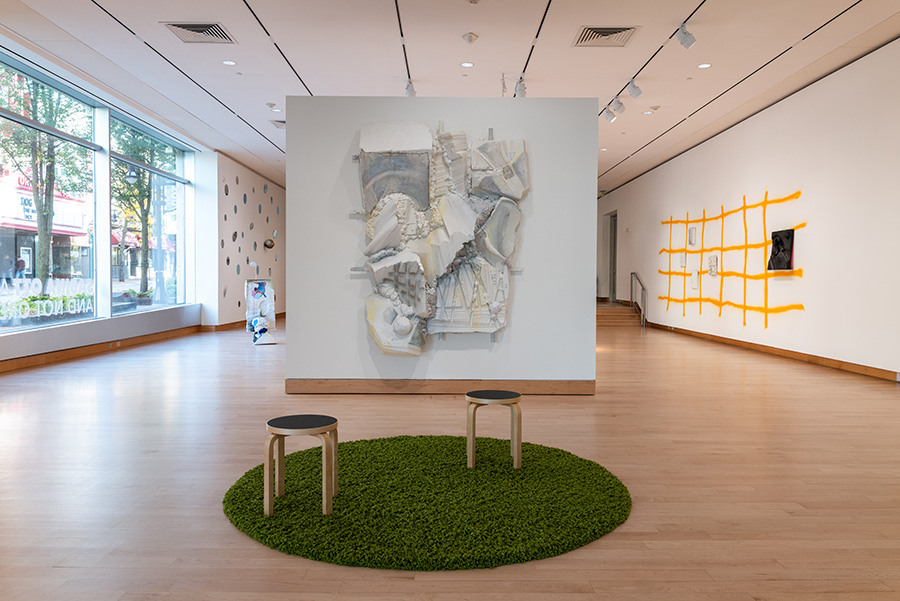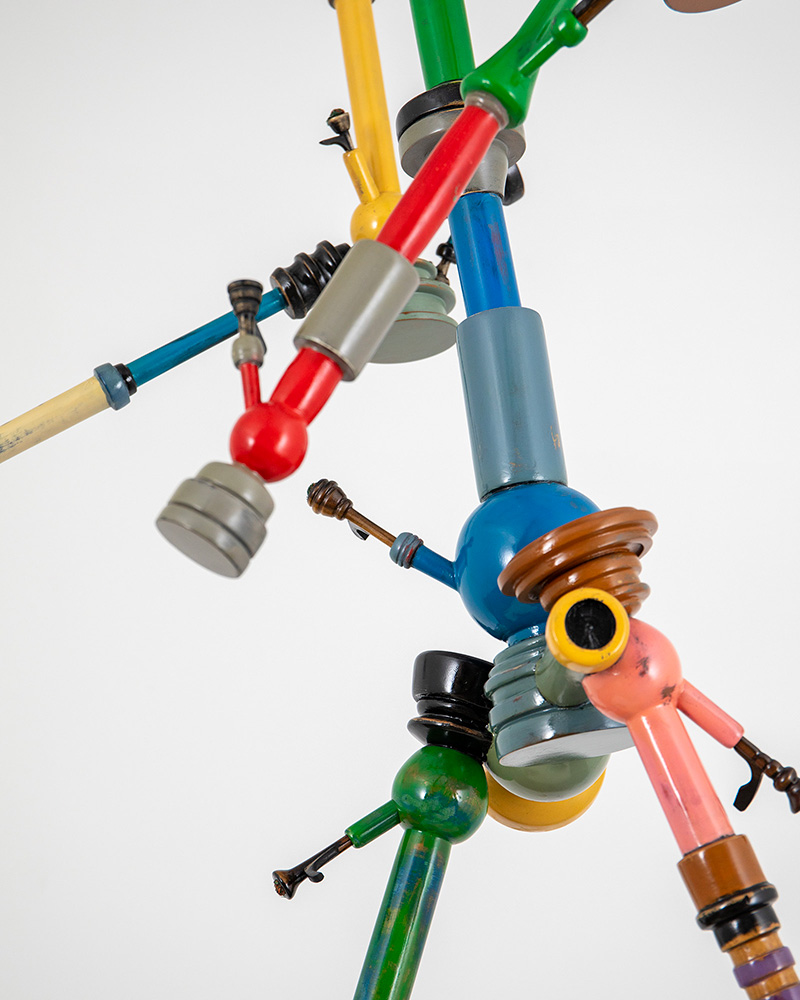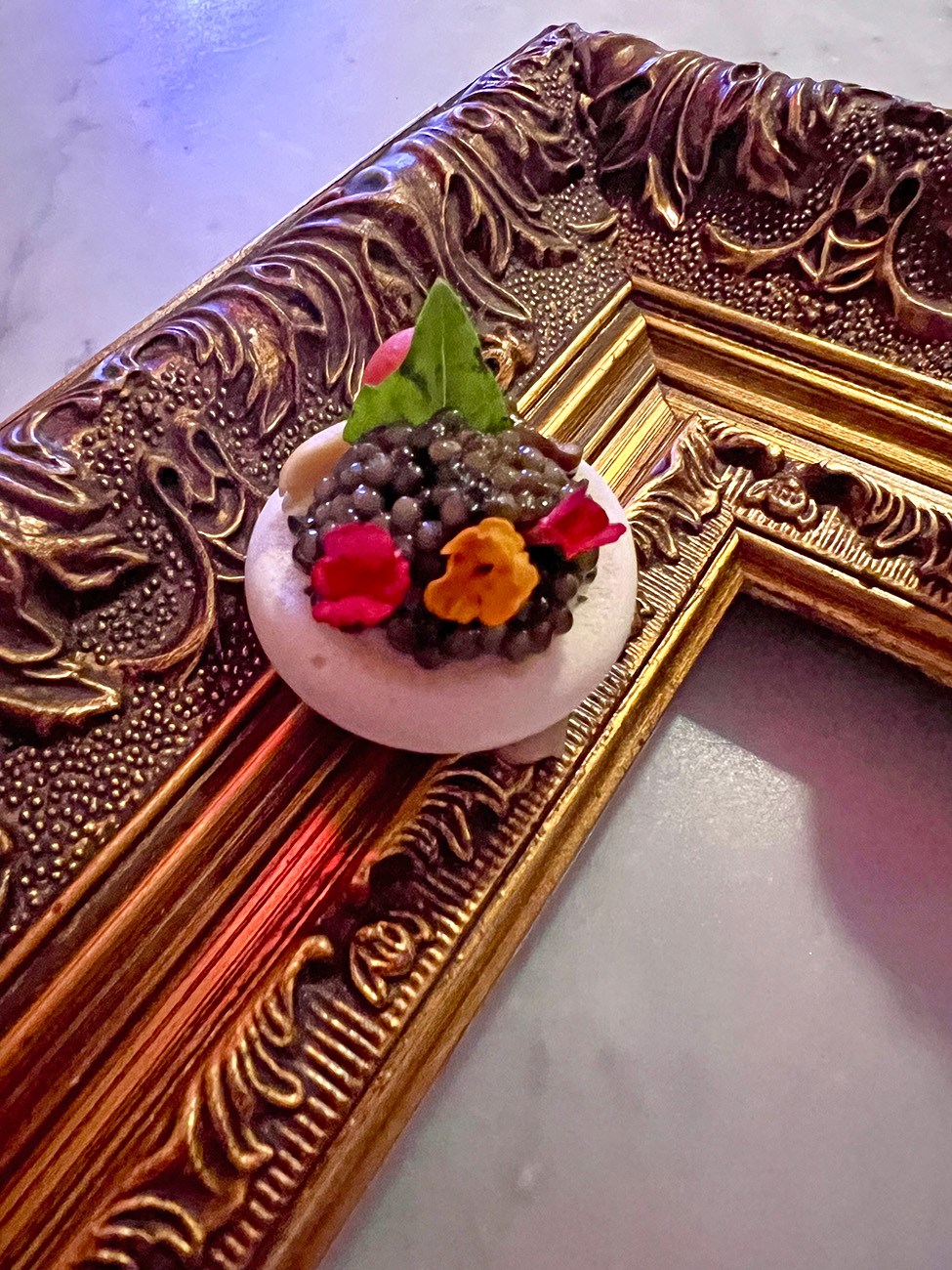Connected Through Time and Space: Rory McEwan
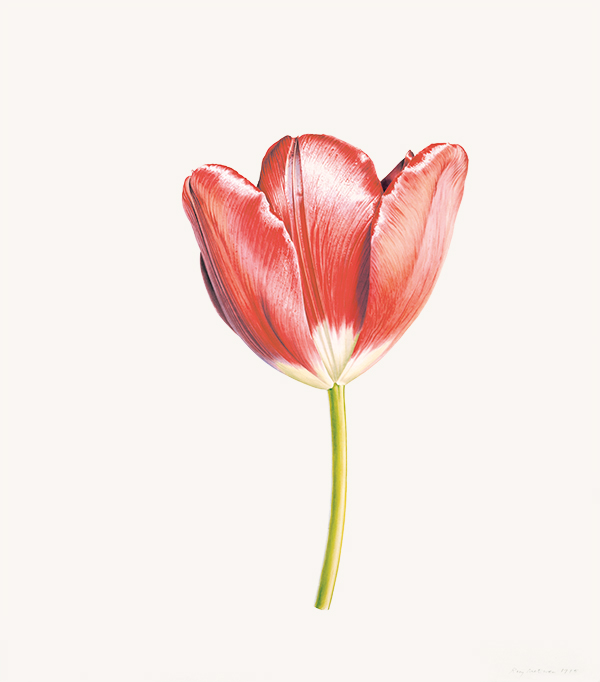
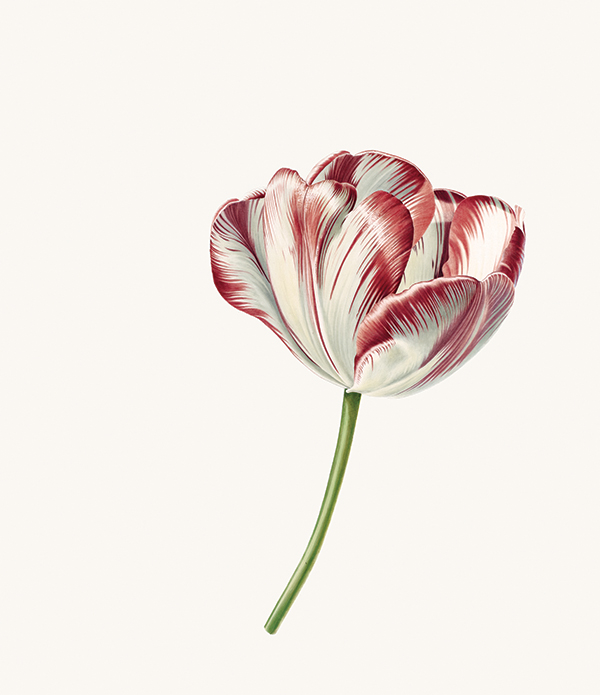
Rory McEwen (1932-1982) Tulip, ‘Julia Farnese’ rose feather, 1976. © The Official Estate of Rory McEwen.
By JACKIE LEWIS
Artist Rory McEwen’s paintings of nature are exceptionally detailed. That much is obvious when you first encounter his work, but upon further study each work reveals itself as something well beyond scientific reproduction or illustration. McEwan’s unique combination of realism and modernism deftly evokes both emotion and beauty.
McEwen became known in the 1960s and 70s for his distinctive style of botanical realism framed by, and placed within, large amounts of white space. The Scottish-born artist was only 50 when he died in 1982, and since that time McEwen’s children have been dedicated to promoting the legacy of the late artist’s work. The opportunity to view dozens of McEwen’s works in person comes to Chicago this summer as Rory McEwen: A New Perspective on Nature arrives at Chicago’s Driehaus Museum and continues the reintroduction of Rory McEwen and his artwork to United States audiences. The Driehaus exhibition is the last stop on a multi-city tour across the country. McEwen is not a household name in the United States, but he is well-known overseas. The current exhibition has been successfully exposing both American art aficionados as well as botanists to his legacy, a prospect that has been exciting for friends and family of the artist to see unfold. Chicago resident Joseph Gromacki, Driehaus Museum Board member and friend of the McEwen family, shared with CGN that this exhibition has had a great reception at its previous stops, and McEwen’s work demonstrates Incredible luminosity. “They have a real trueness of color through the use of watercolor on vellum,” he says, “And [the images] are as real as they can possibly look.”
The breadth of work shown in A New Perspective on Nature firmly orients McEwen in the history of botanical art while acknowledging the bridge he created between Old Masters and contemporary artists through a style that melds multiple time periods and influences. On view will be multiple examples of botanical art from the 16th-18th centuries, with Old Master works by 17th and 18th century floral artists, many from American philanthropist Bunny Mellon’s extensive estate. Works by contemporary botanical artists from the renowned collection of Dr. Shirley Sherwood are also included in the exhibition.
Though work by other artists provides context, the centerpiece of the exhibition is 85 of McEwen’s paintings, on loan from numerous galleries and collections from around the world, featuring highly detailed botanical subjects, from lush individual flowers, to varigated leaves and crisp vegetables, each set strikingly against a vast, white background. The juxtaposition of detailed realism with the spare aesthetics of modernism defines McEwen as an artist whose work was ahead of its time, while paradoxically being an artist of his time.
*
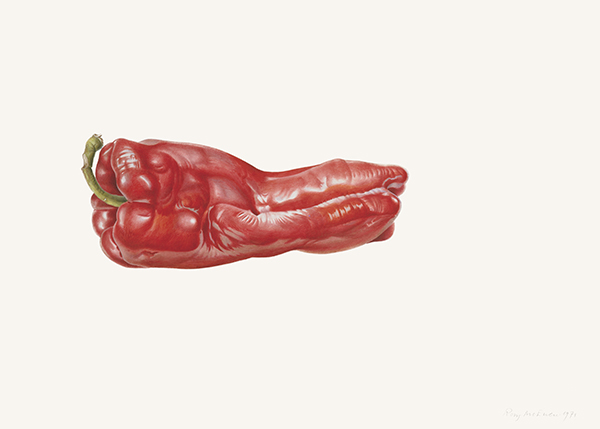
Red Pepper 1971, Watercolour on vellum, 28.9 x 39.4 cm, ©The Estate of Rory McEwen
McEwen’s interest in organic matter had roots in his childhood growing up on the magical Marchmont House in the Scottish Borders where he could indulge his artistic sensibilities in an idyllic setting. At home he was taught how to draw by his governess, before he received a more classical education at the famed Eton College in England, and then subsequently he also made contact with French floral painters during his travels. McEwen’s ideal circumstances and family standing meant in some ways he easily found himself on a path to immersing himself in botanical art. McEwen once said he chose his subject matter as “a way to get as close as possible to what I perceive as the truth of the time in which I live.” For McEwen, natural imagery allowed the artist to delve deeply into a lifelong inquiry into light and color in natural objects.
McEwen was a bit of a celebrity in his youth when he made a name for himself because of another artistic medium: music. An interest that grew out of his inclination for history, McEwen crafted his own interpretations of ancient Scottish folk ballads, playing at the Edinburgh Fringe Festival and even touring the United States in 1956, playing in high profile venues like the Ed Sullivan Show. Despite his musical talent and following, he ultimately dedicated himself to the visual arts. After a musical tour, McEwen claims that “[his] hand had unknowingly educated itself,” and he returned to painting.
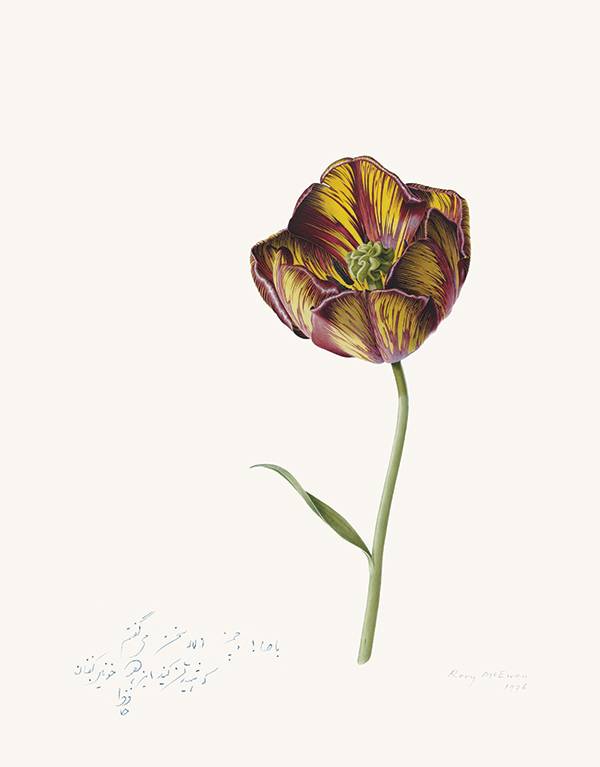
Rory McEwen (1932-1982), Old English Striped Tulip, 1974-76, watercolor on vellum. © The Estate of Rory McEwen.
Lisa Key, Driehaus Museum Executive Director, believes that this exhibition invites us to approach our natural surroundings with curiosity and wonder. “McEwen’s naturalistic paintings,” she considers, “will echo the organic forms and ornamentation throughout our historic interiors”
McEwen’s paintings capture an intensely detailed realism that is a masterwork in painting, especially given the difficulty of his chosen media, watercolor on vellum. This choice highlights how McEwen was inspired by Old Master artists who were fond of painting on vellum as well for realistic depiction, yet McEwen transforms it for his own purposes, which ultimately made him an artist who managed to bridge the gap between past and contemporary botanical art styles. While the material choices are similar, McEwen’s placement and use of the negative and abstraction of blank space was his own invention. As Gromacki explains choosing a beautiful object, such as a flower, and letting it become everything in the white space glorifies the subject in a way prior artists did not. It places the subject in conversation and allows a sense of beauty and emotion that a more scientific depiction may lack.
Late in his career, before his untimely death due to cancer, McEwen’s work focused on deteriorating leaves. He felt that so much was happening within a dying leaf that it could capture life’s fading grandeur. McEwen proclaimed that he was not a botanist or a scientist but an artist depicting more than the visual in his works. Even once the artist himself was gone, McEwen’s art had a profound impact on the work of contemporary artists who came after, a testament to how some artists utilized a connection between modernism and classical botanical art to inform their own artistic expressions. McEwen’s style is established as a connective piece, bridging the past and the future.
*
The Driehaus Museum aims to share exhibitions that bring new perspectives to visitors. One way that the museum plans to cultivate these new viewpoints is through thought provoking collaborations with other local institutions. Throughout Rory McEwen: A New Perspective on Nature, the Driehaus Museum will partner with Brushwood Center at Ryerson Woods, the Chicago Botanic Garden, the Morton Arboretum, and the Peggy Notebaert Nature Museum amongst others. The Driehaus will also participate in the Magnificent Mile Association’s Annual Tulip festival. Julie Treumann from the Driehaus shared, “The collaboration happened–no pun intended–quite organically. We realized that between McEwen’s depictions of tulips being one of the central images of the exhibition and the exhibition opening in the spring, around the time of the Mag Mile’s Tulip Festival, it was a natural fit. The Mag Mile was excited to make this work and we have had a fruitful collaboration. We are but a hop, skip, and a jump from the Mile, so we hope the colorful blossoms will accentuate our connection to the Mile and thus to our goal to open our doors wider to Chicagoans and visitors from around the world.” Collaborations such as these will increase the general public’s exposure to McEwen and to the museum. “The tulips will be planted right outside our buildings,” Treuman said. “We hope they will announce to our neighbors that they have something beautiful to look forward to, not just a new Driehaus Museum exhibition, but a sure sign that spring is on the way. And, of course, tulips don’t live forever. We don’t know if they will still be in full flower by the time the exhibition opens in later May, but the accompanying tulip sculpture will endure! More than that, the tulips are a welcoming sign of the season, an enticement to draw people into the Museum, and a sign of our belief in Michigan Avenue’s importance for the City of Chicago.”
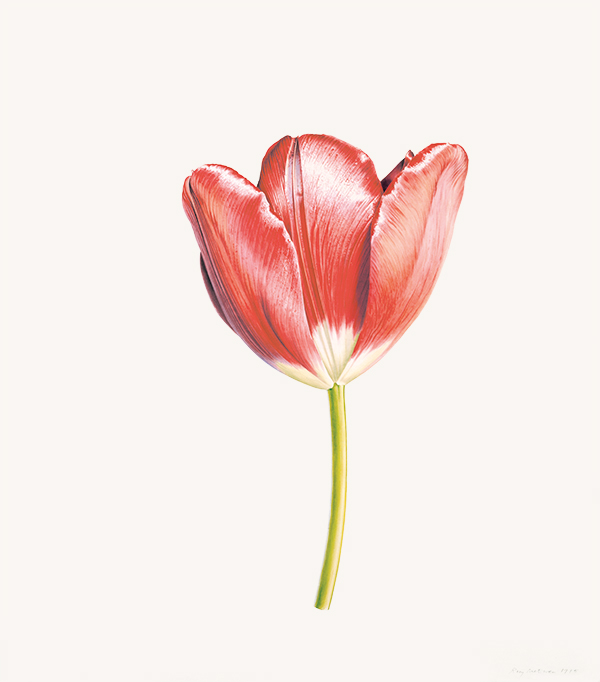
Rory McEwen (1932-1982), Helen Josephine, 1975 © Estate of Rory McEwen
The Driehaus Museum will also be partnering with Chicago’s Old Town School of Folk Music to celebrate McEwen’s art beyond the visual realm. This collaboration highlights the way McEwen’s musical impact reaches back into the past for inspiration while continuing to inspire artists of today, similar to his visual work. These many cross disciplinary experiences expand the breadth of the exhibition to demonstrate how McEwen’s legacy is not only a bridge between time, but places and spaces as well. Like the organic matter in his paintings, his life and this exhibition connect different areas of the city through his contributions.
As Joe Gromacki shared, “Chicago is going to be the most exciting and diverse experience of this exhibition. It fills a niche that other venues are not filling.”
#
Rory McEwen: A New Perspective on Nature
May 16–August 17, 2025
50 E. Erie, Chicago, IL 60611
